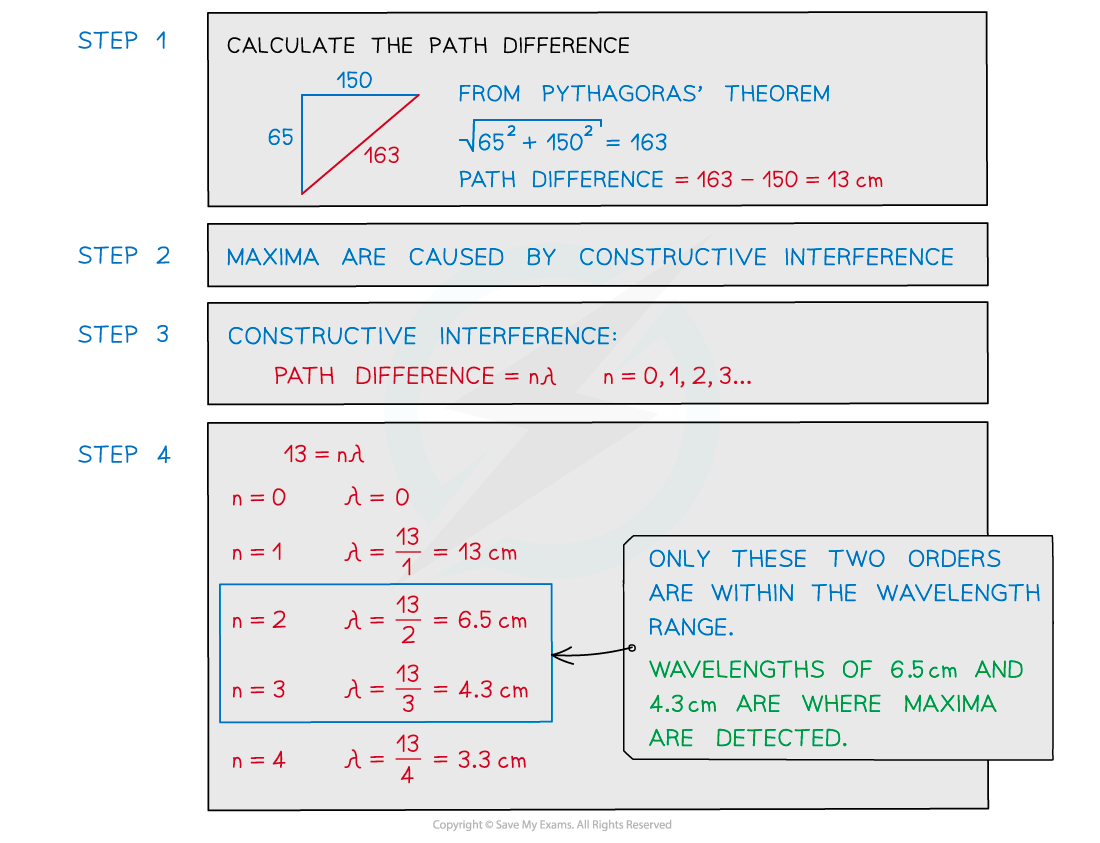Two-Source Interference (OCR A Level Physics): Revision Note
Exam code: H556
Two-Source Interference
Two-source interference can be demonstrated using sound and microwaves
Using Sound Waves
Sound waves are longitudinal waves so are made up of compressions and rarefactions

Sound wave interference from two speakers
Constructive interference occurs when two compressions or two rarefactions line up and the sound appears louder
Destructive interference occurs when a compression lines up with a rarefaction and vice versa. The sound is quieter
This is the technology used in noise-cancelling headphones
Using Microwaves
Two source interference for microwaves can be detected with a moveable microwave detector

Microwave interference experiment
Constructive interference occurs in regions where the detector picks up a maximum amplitude of the signal
Destructive interference occurs in regions where the detector picks up no signal
Worked Example
Two coherent sources of sound waves S1 and S2 are situated 65 cm apart in air as shown below.

The two sources vibrate in phase but have different amplitudes of vibration. A microphone M is situated 150 cm from S1 along the line normal to S1 and S2.The microphone detects maxima and minima of the intensity of the sound. The wavelength of the sound from S1 to S2 is decreased by increasing the frequency. Determine which orders of maxima are detected at M as the wavelength is increased from 3.5 cm to 12.5 cm.
Answer:

Examiner Tips and Tricks
Always refer back to the interference situation in the exam question. For example, refer back to the 'signal' for a microwave detector and the 'volume' of sound waves interfering

You've read 0 of your 5 free revision notes this week
Unlock more, it's free!
Did this page help you?